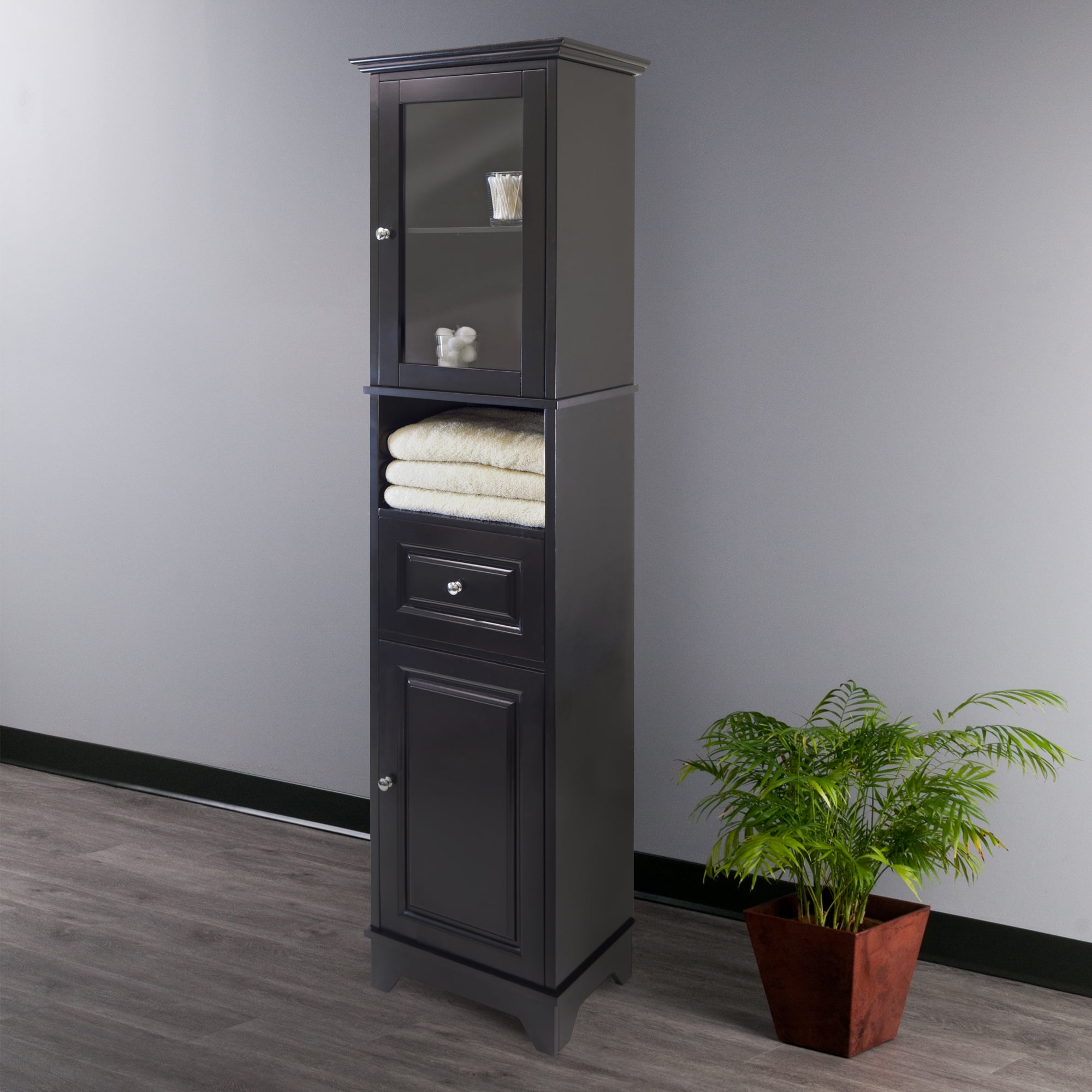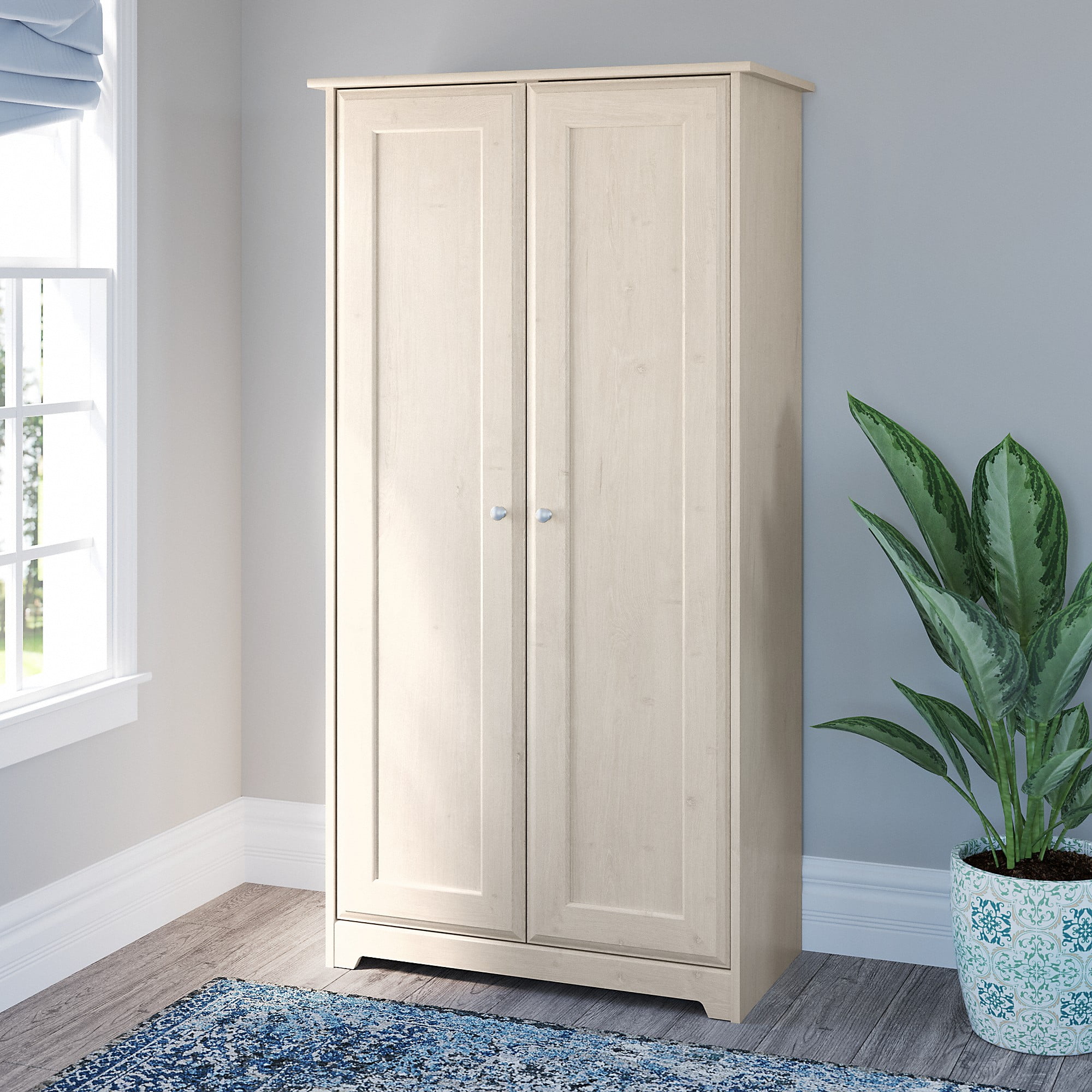Design Considerations for Tall Entryway Cabinets with Doors

A tall entryway cabinet, a silent sentinel guarding the threshold of a home, offers both practical storage and a significant opportunity to enhance the aesthetic of a space. Its design must carefully balance functionality with visual appeal, seamlessly integrating into the overall home décor. This exploration delves into the crucial considerations for crafting such a piece, focusing on a modern minimalist aesthetic.
Material Choices and Dimensions for a Modern Minimalist Cabinet
The essence of modern minimalism lies in clean lines and understated elegance. For our entryway cabinet, we envision a structure approximately 72 inches tall, 24 inches wide, and 12 inches deep—proportions that command attention without overwhelming the entryway. The material palette should reflect this ethos. A sleek, light oak veneer, chosen for its natural warmth and subtle grain, forms the cabinet’s body. This is complemented by brushed nickel hardware, its matte finish offering a sophisticated counterpoint to the wood’s natural texture. The cabinet’s base could be crafted from a sturdy, powder-coated steel, adding a touch of industrial chic while maintaining the minimalist aesthetic.
Door Styles and Their Aesthetic Impact
The choice of door style significantly influences the cabinet’s overall aesthetic. Different styles evoke different moods and complement various design schemes.
| Door Style | Material | Aesthetic Impact | Suitability for Minimalist Design |
|---|---|---|---|
| Panel | Oak veneer | Clean, classic, understated elegance | Highly suitable |
| Glass | Clear or frosted glass | Modern, airy, reveals contents (if desired) | Suitable, depending on contents |
| Louvered | Oak veneer | Textural interest, allows for ventilation | Moderately suitable, depending on overall design |
Internal Configurations and Functionality
The internal organization of a tall entryway cabinet directly impacts its usability. Careful planning is crucial to maximize storage efficiency and ensure easy access to stored items.
The optimal configuration will depend on individual needs, but several possibilities exist:
Tall entryway cabinet with doors – A well-designed internal layout ensures maximum utility. Consider these functional options:
- Adjustable Shelves: Allow for customization based on the size and type of items being stored, accommodating everything from hats and gloves to larger bags and shoes.
- Drawers: Ideal for smaller items like keys, wallets, and sunglasses, keeping them organized and readily accessible.
- Hanging Rod: A pull-out hanging rod provides a convenient space for coats, scarves, or other garments, maximizing vertical space utilization.
- Designated Compartments: Create specific areas for different items, such as a section for mail, another for shoes, and a third for umbrellas.
Visual Description and Lighting, Tall entryway cabinet with doors
Imagine a tall, slender cabinet, its light oak veneer gleaming softly under recessed LED lighting. The subtle, warm light illuminates the interior, showcasing the carefully organized contents without harsh glare. The brushed nickel handles add a touch of understated elegance, complementing the clean lines of the cabinet’s design. The absence of visible hardware further contributes to the minimalist aesthetic. The cabinet’s depth is strategically chosen to avoid overwhelming the entryway, while its height allows for significant storage capacity. A small, integrated mirror on the inside of one of the doors adds a functional element while subtly enhancing the sense of space. The overall effect is one of understated sophistication and effortless functionality, a silent guardian of the home’s entrance, both beautiful and practical.
Materials and Construction of Tall Entryway Cabinets with Doors: Tall Entryway Cabinet With Doors
The heart of a sturdy and aesthetically pleasing entryway cabinet lies in the careful selection of materials and the precision of its construction. The choice of materials directly impacts not only the cabinet’s lifespan and visual appeal but also its overall cost. Understanding these factors is crucial for creating a piece that stands the test of time and complements your home’s style.
The interplay between material properties and construction techniques determines the final quality and longevity of your tall entryway cabinet. A well-constructed cabinet, regardless of the material, will boast superior durability and functionality. However, the inherent characteristics of the materials themselves play a significant role in the cabinet’s overall performance and aesthetic.
Material Comparison: Wood, Metal, and Composite
A careful consideration of material properties is paramount in choosing the ideal composition for your entryway cabinet. The following table provides a comparative analysis of wood, metal, and composite materials, considering their durability, cost-effectiveness, and aesthetic qualities.
| Material | Durability | Cost-Effectiveness | Aesthetic Qualities |
|---|---|---|---|
| Wood (e.g., solid oak, pine) | High; naturally strong and durable, especially hardwoods. Susceptible to warping or damage from moisture. | Moderate to High; varies greatly depending on wood type and quality. | Classic, warm, and versatile; can be stained or painted to match any décor. |
| Metal (e.g., steel, aluminum) | High; resistant to dents and scratches; susceptible to rust (unless treated). | Moderate; can be cost-effective for certain types of metal and finishes. | Modern, sleek, and industrial; can be powder-coated for a variety of colors and finishes. |
| Composite (e.g., MDF, particleboard) | Moderate; susceptible to damage from moisture and impact; can be strengthened with veneers. | Low; generally the most affordable option. | Versatile; can be painted or veneered to mimic the appearance of more expensive materials. |
Construction Process: A Symphony of Joints and Finishes
The construction of a tall entryway cabinet is a meticulous process involving precise joinery, robust hardware, and careful finishing. Each step contributes to the overall strength, stability, and aesthetic appeal of the finished piece.
- Frame Construction: The cabinet’s frame is typically built using mortise and tenon joints, dowel joints, or pocket hole screws for strength and stability. These joints are carefully glued and clamped to ensure a secure bond.
- Panel Installation: Cabinet panels are typically attached using dadoes, rabbets, or simple screws. The choice of method depends on the cabinet’s design and the material used.
- Door Installation: Doors are hung using hinges, either mortised into the cabinet frame or surface-mounted. The type of hinge will depend on the cabinet’s style and the desired aesthetic.
- Hardware Installation: Handles, knobs, and latches are installed after the doors are hung, ensuring proper alignment and functionality.
- Finishing: The cabinet is sanded smooth, and then finished with paint, stain, or varnish, providing protection and enhancing the aesthetic appeal. Multiple coats may be applied for optimal durability.
Flat-Pack Assembly: A Step-by-Step Guide
Assembling a flat-pack tall entryway cabinet requires careful attention to detail and the use of the provided instructions. However, the general process usually involves these steps.
- Lay out all components: Carefully unpack and identify all parts, hardware, and instructions.
- Assemble the cabinet frame: Follow the instructions to join the side panels, top, and bottom using the provided cam locks, dowels, or screws.
- Attach shelves: Install shelves according to the instructions, using shelf supports or brackets.
- Attach the back panel: Secure the back panel to the frame using nails, staples, or screws.
- Install the doors: Attach the hinges to the doors and cabinet frame, ensuring proper alignment and clearance. Adjust hinges as needed.
- Install the hardware: Attach handles, knobs, or latches.
Styling and Placement of Tall Entryway Cabinets with Doors

The strategic placement and stylistic integration of a tall entryway cabinet can dramatically alter the ambiance of a home, transforming a mere entryway into a statement piece. The cabinet itself, a silent sentinel guarding the threshold, becomes an active participant in the narrative of your home’s design. Its very presence dictates flow, style, and even the emotional response one experiences upon entering.
A tall entryway cabinet, with its inherent verticality, offers a unique opportunity to play with proportion and perspective. The choice of style, material, and placement dictates its role in the overall aesthetic.
Cabinet Styles in Diverse Interior Designs
The versatility of a tall entryway cabinet allows it to seamlessly integrate into various design schemes. Imagine, for instance, a rustic farmhouse style, where a cabinet crafted from reclaimed wood, its surface bearing the gentle patina of time, stands proudly. The doors might be adorned with simple, wrought-iron hardware, echoing the era’s craftsmanship. Its warm tones complement a palette of creamy whites and muted greens, creating a welcoming and inviting atmosphere.
In contrast, a contemporary setting might showcase a sleek, minimalist cabinet in high-gloss lacquer. Clean lines, a monochromatic color scheme, and subtly integrated hardware define its modern elegance. This cabinet acts as a quiet anchor, its polished surface reflecting light and enhancing the airy feel of the space. A traditional setting might benefit from a cabinet with ornate detailing, perhaps featuring paneled doors and rich, dark wood. This piece, a testament to classic design, provides a sense of timeless sophistication, complemented by period-appropriate accessories.
Accessorizing the Entryway Cabinet
Careful accessorizing elevates the cabinet from functional storage to a curated display. The key lies in balance and intentionality; every item should contribute to the overall aesthetic.
- A beautifully framed mirror, positioned centrally above the cabinet, expands the space and adds a touch of glamour, reflecting light and enhancing the entryway’s brightness.
- A collection of antique keys, displayed on a small tray atop the cabinet, adds a layer of intriguing history and personality. The subtle shimmer of the metal keys contrasts with the surrounding wood.
- A stylish hat stand, elegantly placed to the side of the cabinet, provides both practicality and a decorative element. The curved lines of the hat stand add a soft counterpoint to the cabinet’s verticality.
- A small, potted plant, perhaps a trailing ivy or a miniature bonsai, introduces a touch of nature and softens the cabinet’s lines. The green foliage adds a pop of color and visual interest.
